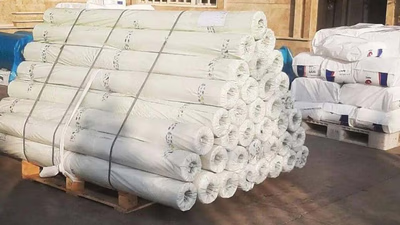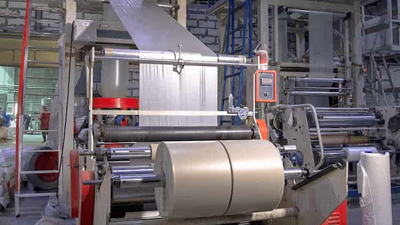
Nylon"s versatility in various industries enhances trade opportunities. "
Nylon is produced from petroleum raw materials and the price of crude oil in the world market can affect the price of nylon . An increase in the price of oil can lead to an increase in the price of nylon, because the cost of nylon production increases through the increase in the price of its raw materials. Demand and supply also affect the price of nylon. If the demand for nylon increases and its supply is limited, the price of nylon will increase. Factors such as the growth of consumer industries, development of packaging, automotive industry and other consumer industries can increase the demand and affect the price of nylon. Nylon production costs are determined by factors such as raw material prices, energy costs, labor costs, and other production costs. An increase in production costs can lead to an increase in the price of nylon.
Nylon production is done globally by several countries with different technologies and methods. Some of the major nylon producing countries include China, America, Germany, Japan and South Korea. The volume of nylon production in each country and its changes over the years can be examined. Nylon is used as a versatile material with wide applications in various industries such as clothing, packaging, automotive, electronics and construction. Examining the needs and consumption in each industry and country can help analyze the global nylon business market. The global trade of nylon includes export and import to and from different countries. Investigating the amount and flow of nylon export and import in each region and country can play an important role in market analysis. Factors such as prices, quality, market share and trade regulations can have a great impact on the nylon export and import process.
The nylon market is globally competitive and companies compete nationally and internationally to gain market share in this industry. Examining competitiveness, market share, and the impact of competition on pricing and business strategies can play an important role in analyzing the global nylon business market. Laws and regulations related to the production, use and recycling of nylon at the national and international levels also have a great impact on the global trade of nylon. Standards, environmental regulations, health and safety regulations, and other regulations can have a major impact on the nylon business worldwide. Industry sources, official statistics and trade reports can be useful for obtaining accurate and up-to-date information on the global nylon trade volume and market. Also, nylon-related industry associations and organizations may provide useful information and statistics.
Examining the demand and supply of nylon in the world market is of great importance. It should be analyzed how the demand for nylon changes in different countries and industries and whether the supply is sufficient to meet this demand or not. It is necessary to examine the prices of nylon in the world market and the factors that affect the price, including changes in crude oil prices, production costs and economic conditions. Analyzing prices and predicting future changes in price can also help to make the right decision in the field of nylon business. Examining the competition in the global nylon market and analyzing the competitive power of companies and countries in this industry is important. Knowing the competitors, market share and influence in the market can help companies to adopt appropriate strategies. It is important to review the innovations and technological developments in the nylon industry. The development of new technologies can help to improve the quality and performance of nylon, reduce production costs and increase competitiveness. In recent years, the importance of environmental and sustainability issues has increased in the nylon business.
Investigating the impact of nylon production and use on the environment, analyzing measures related to recycling and waste reduction, and evaluating the use of more sustainable materials in nylon production can be useful for companies in providing more sustainable products that respond to market needs. It is important to analyze the trade and tax policies of the countries regarding nylon trade. Changes in tariffs and import and export procedures, international trade agreements and their impact on nylon trade should be examined. Geographical factors such as nylon production and consumption areas, shipping routes, and international communications affect nylon trade. Also, the population and population structure in different countries and regions can also affect the demand and consumption of nylon. Political changes, laws and regulations at the national and international levels can also affect the nylon business. Examining the policies, regulations and restrictions of nylon export and import in countries and destination points can help to understand the business environment.
Nylon is used as a multi-purpose plastic material with wide applications in various industries. Nylon is used in the production of clothes, socks, hospital, sportswear and rainwear. Nylon is used in the production of nylon polyethylene films (Nylon PE) and nylon films, which are used in the packaging of food, industrial products and chemicals . Nylon is used in the production of automotive parts such as pipes, cables, batteries and engine parts. Nylon is used in the production of electrical and electronic cables, batteries, engine parts and other electronic products. In the construction industry, nylon is used as a material with heat and flame resistance properties in the production of pipes, cables and thermal insulation. Countries that produce nylon may export part of their production to other countries.
Nylon exports are usually done through commercial channels such as importers, traders and distributors. Countries like China, America, Germany and Japan are among the biggest nylon exporters in the world. Countries that need nylon for their domestic use and industries may import nylon from other countries. Factors such as price, quality and domestic production ability can be influential in the decision to import nylon to a country. In this context, countries such as China, India, and the United States of America are among the largest importers of nylon in the world. There is also a relationship between the price of nylon and the exchange rate. If the national currency weakens compared to the foreign currency, the price of nylon in the exporting country can increase. Also, the exchange rate can also have an effect on nylon production costs and thus affect its price. Trade policies such as import and export restrictions, customs tariffs and other regulations may have an impact on nylon prices. Additional taxes and duties can also lead to an increase in the price of nylon. The effect of each of these factors on the price of nylon may be different at any time and requires a more detailed analysis.
Growth in industries such as packaging, automotive, electronics, and home appliances can increase the demand for nylon. Nylon is used as a resistant and versatile material in these industries, and the increase in the activities of these industries can lead to an increase in the demand for nylon. Packaging is one of the main industries using nylon. With the growth of e-commerce and the need to package products, the demand for nylon in packaging is increasing. Nylon is used in the clothing industry, especially in the production of sportswear and waterproof clothing. The change in the fashion of using these types of clothes and the increase in demand for them can affect the demand for nylon. Changes in the population and age structure of society also affect the demand for nylon. For example, the growth of the young population and the increase in sports and outdoor activities can increase the demand for sportswear and waterproof clothing manufactured from nylon. Global economic conditions can also affect demand. Economic growth and increase in the average income of the population in developing countries can lead to an increase in the demand for nylon products.



